Snakeheads should top every angler's to-do list. Joe Cermele
What makes some fish wildly popular, while others fall completely off the radar? Tackle sales are part of it. Bass are in the forefront of angling because we buy lots of bass tackle, thus providing motivation for the fishing industry to push bass, bass, and more bass. The same goes for walleyes and trout. That’s not the whole picture, though. Frankly, I think a lot of it has to do with conformity and consensus; you like a certain fish because everyone else likes that fish and agrees said fish is cool and worthy of your time. Then you’ve got the food factor—is it acceptable to eat the fish and does it taste good?
But now imagine if we judged the worth of a gamefish solely on how they fought, how challenging they are to catch, and how much fun we had targeting them.
Those are my criteria for deciding how and where I spend my time on the water. Forget the rest of it. With that philosophy in mind, I’ve listed—and ranked in descending order—the 10 freshwater fish I consider the most underrated. Roll your eyes if you must, but if you don’t have a good time cranking on any one of these species, you might need to check your pulse.
10. Rock Bass
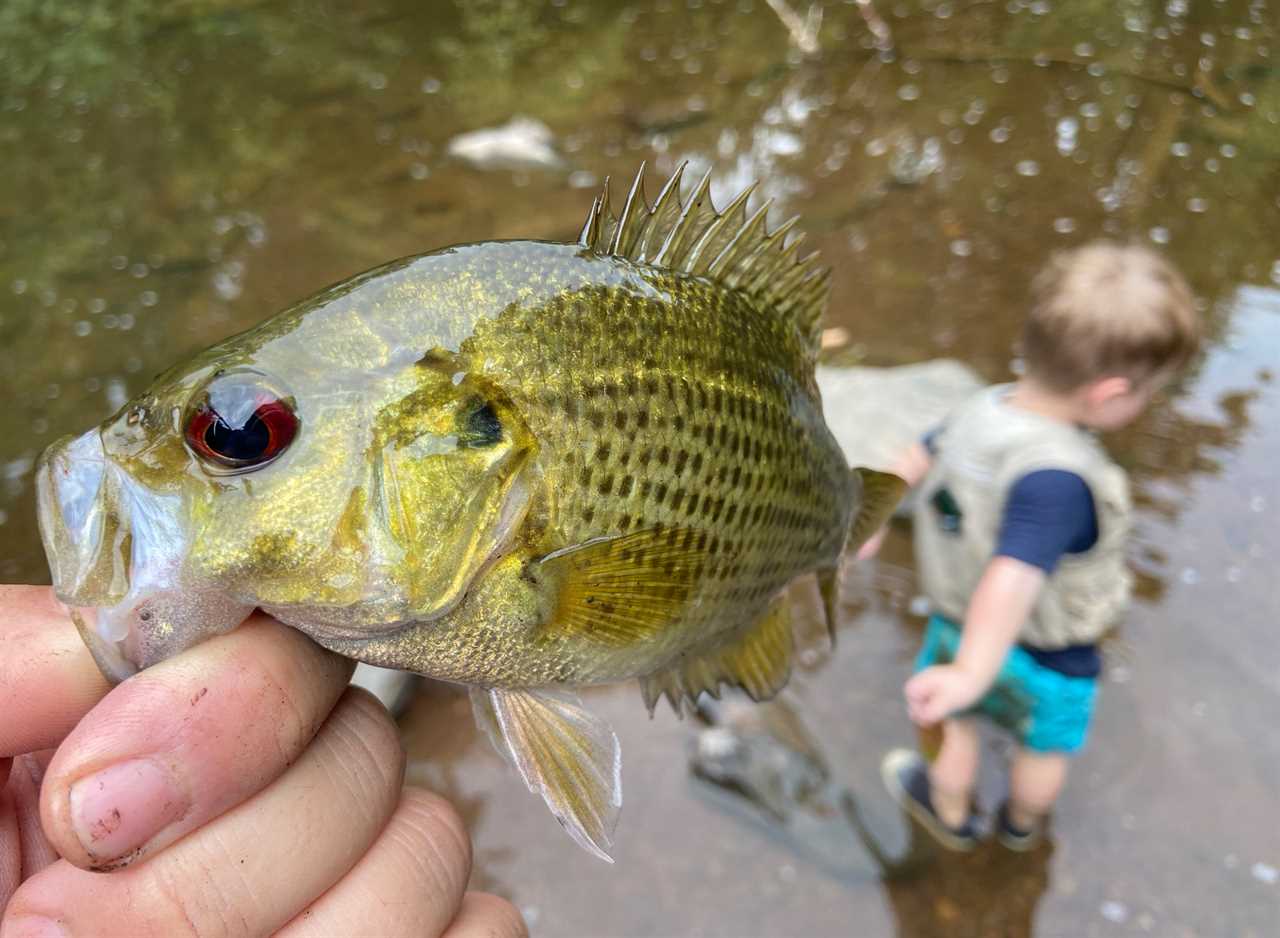
With the right tackle, rock bass are awesome fighters. Joe Cermele
Common Names: Red eye, goggle-eye, rock perch. As a rule, wherever you find smallmouth bass in the eastern half of the country and Canada, you’ll find rock bass. That might be in a small suburban stream or the depths of mighty Lake Erie, but regardless of the body of water, rockies are really good at ticking bass anglers off. These fish are as aggressive—if not more aggressive—than smallmouths, and despite their small size they have a big mouth, which means they can slurp down that 4-inch Senko you’re using to entice bronzebacks. Rock bass will also take shots at larger jerkbaits and crankbaits, and at times they can be so thick that it becomes downright obnoxious. But rock bass can also be a total blast if you’re in the right frame of mind.
On big bodies of water, anglers are typically using rods built to handle 6-pound smallies or 20-plus-inch trout. While rock bass might hit like freight trains, heavier gear easily overpowers them, minimizing their fighting ability. If, on the other hand, you scale down to a micro-light rod and reel spooled with 2- to 4-pound test, they’re a riot, especially if you’re fishing with kids.
I was lucky enough to grow up near a few streams with strong rock bass populations, but not stronger than the multitude of sunfish species, which made rock bass a “special” catch. Nowadays, my 4-year-old son lights up on these same waters when we see that gold flash. Small in-line spinners like a Panther Martin are perfect when rock bass are feeling charged up, but if they’re not in the mood to chase, a Trout Magnet under a float is rock bass candy, and when they hit, that float is gone in a blink.
9. Longnose Gar
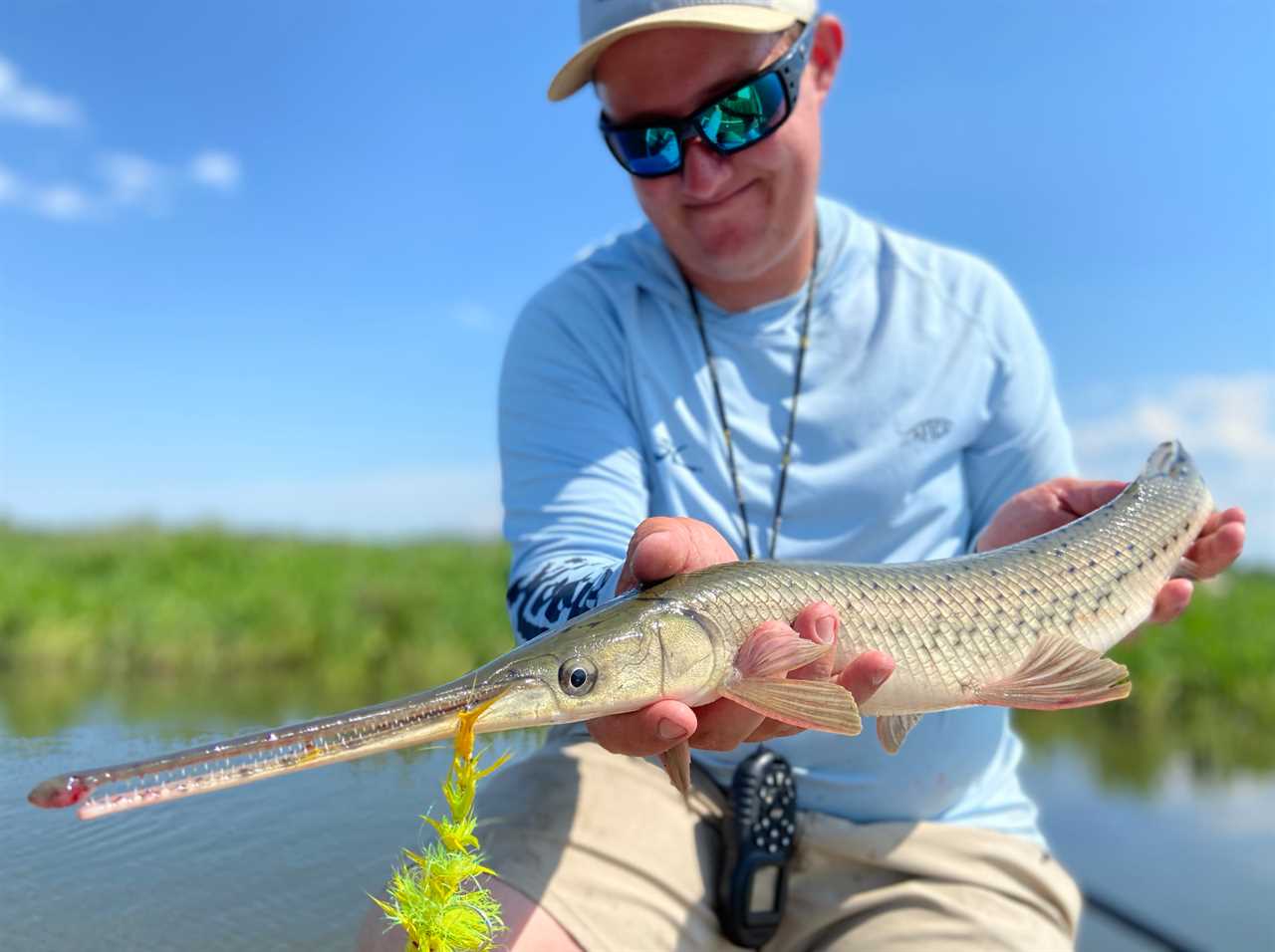
Longnose gar are challenging to catch, and that’s what makes them fun. Joe Cermele
Common Names: Longnose garpike, billy gar. Longnose gar are pretty easy to come by from Oklahoma east. They can be found as far north as Eastern Canada and exist throughout the South. For the most part, anglers don’t bother with them. And if anything, they’re just a nuisance rolling and splashing around, spooking more coveted gamefish and creating the illusion of a feeding frenzy while chasing baitfish. They do, however, have a cult following among rod-and-reel anglers, most of whom will tell you it’s the challenge that’s so addicting.
Longnose gar can easily weigh 20 pounds or more, but despite all that body mass, they forage on very tiny prey. They have no choice, because they’re long noses and tiny needle-like teeth are designed to pinch and hold small food. This is what makes them so difficult to catch; you have to use something small, and then when the gar grabs it, you’ve got to stick the hook into that skinny, bony mouth.
One solution is to use a rope fly, which is somewhat controversial. You simply shred the end of a piece of nylon rope, drag it past a gar, and if the fish hits the rope gets tangled in its teeth. The issue is that if your line breaks, the rope may never get untangled, rendering the gar’s mouth permanently shut. I’ve gone gar fishing with small double-hook streamer flies, and though it’s not easy to stick one, when you do, you’re in for a hell of a ride. Longnose will also eat cut bait, you just need to give them time to work it from that beak to the throat before setting.
8. Fallfish

With the right attitude fallfish can be more fun that trout. Joe Cermele
Common Names: Silver chub, whiteface. The fallfish is a member of the chub family, and it can be found throughout the Northeastern U.S. and Canada. It’s also the largest minnow species native to Eastern North America. Though many chub species exist throughout the country, fallfish tend to thrive in cold-water rivers, often sharing habitat with wild trout. Unlike many other chub species, though, fallfish can grow big. The world-record weighed in at 3 pounds, 9 ½ ounces, and if you hook one that size while trout fishing, it’s going to put a serious bend in your 5-weight fly rod. Anglers, of course, have mixed emotions about this.
Fallfish are aggressive, and they’re often down to chew even when all the trout and smallmouths in the river seem to have lockjaw. Best (or worst to some people) of all, they’ll eat pretty much anything you’re throwing. Caddis on the surface? They’ll sip it. Mealworm ticking on the bottom? They’ll Hoover it. Big shiny jerkbait ripping through a riffle? They’ll hammer it. Fallfish are so willing and such great fighters on light tackle that there are cults of anglers scattered across their range who would rather target them than trout.
I’ve had giant fallfish smack mouse flies in the dark and pummel streamers midday. At first you think it’s a giant brown, but rather than be disappointed I can’t help but marvel at the power and tenacity of these giant minnows.
7. Suckers
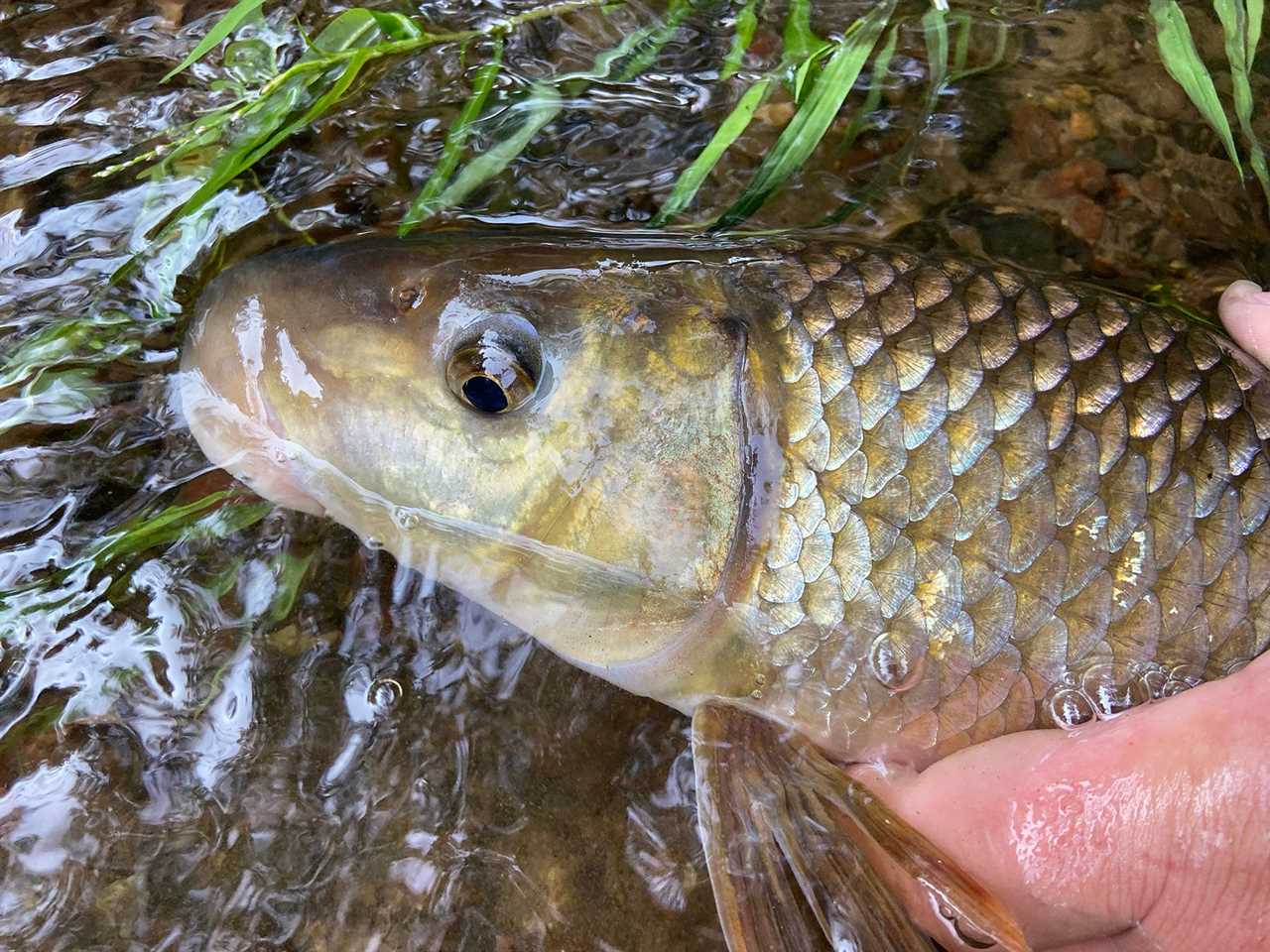
Suckers, like this redhorse, are found all over the country. Joe Cermele
Common Species: River redhorse, white sucker, shorthead redhorse. No matter where you live, there are some suckers swimming close by. This family of fish is one of the most prolific in the country, and while they are a huge part of the culture in places like the Ozark Mountains where locals gig them and fry them up, they are largely overlooked by hook-and-line anglers. At some point you’ve probably had a sucker eat your trout nymph or grab a worm intended for bluegills. If you were paying attention, you also may have noticed that they can fight.
Not long ago, I had the chance to chase river redhorse in Minnesota with an angler that lives for sucker fishing. It was an eye-opening experience. Not only did his sucker pursuits allow him to fish some beautiful streams, considering there weren’t many gamefish that lived in them, but he also had miles of water in unspoiled wilderness all to himself. River redhorse grow big, capable of reaching 10 pounds, and it only took me spotting a couple giants flashing in the riffles to get as excited as I would catching a glimpse of a big trout.
Nightcrawlers are one of the best baits for any kind of sucker, though crayfish meat also works well, as does shellfish like mussels and clams. When I hooked my first river redhorse, I watched in awe as the drag spun wildly against a fish ripping downstream faster than any brown trout I’d ever hooked.
6. Freshwater Drum
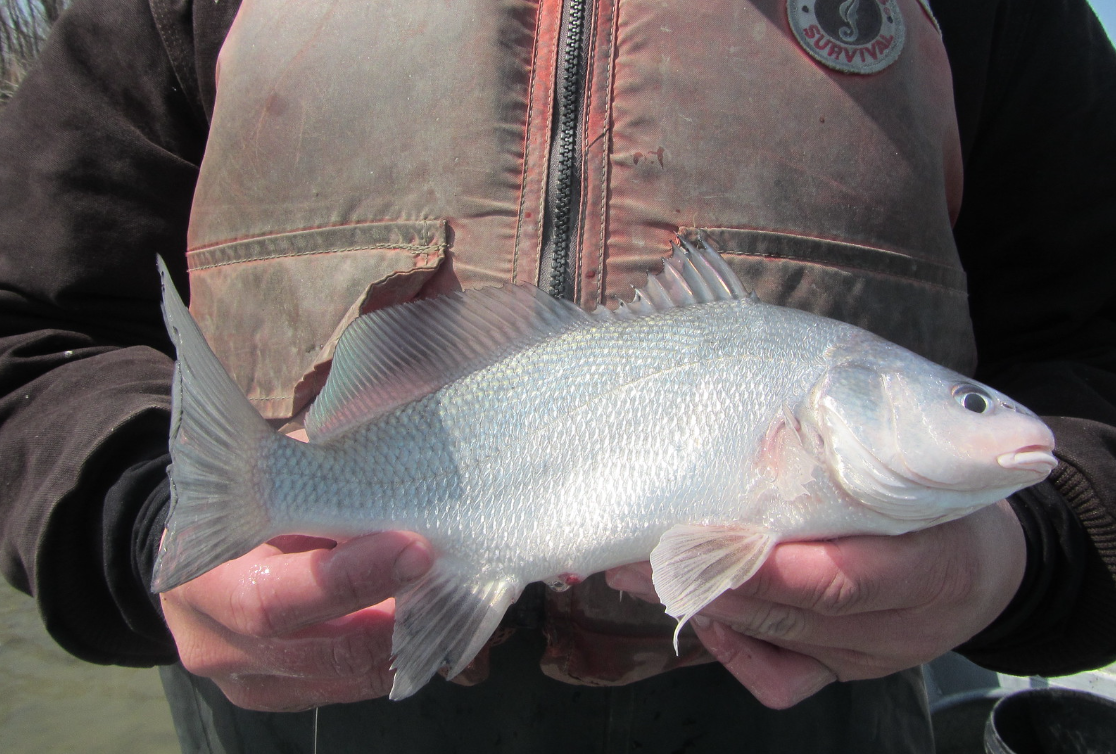
Freshwater drum are found all over the U.S. USFWS
Common Names: Sheepshead, gasper goo. Freshwater drum are one of the most wide-ranging fish in America. From Texas to Minnesota and east into Appalachia, these cousins of saltwater black and red drum can be found in everything from deep reservoirs to huge rivers. The world record was caught in Tennessee and weighed a whopping 54 pounds, 8 ounces. Though brutes that big might be rare, drum in the 15- to 20-pound range are more common, and I know from experience they fight just as hard as their salty counterparts. So, then, why do most anglers not care a lick about them?
The overriding theory is that it’s because they’re no good on the table. This, however, is a matter of opinion and somewhat of a myth. A good friend of mine once fried up fillets from some small drum, mixed them up with fried walleye fillets, and asked a group of walleye zealots to taste both. Not only could many not distinguish between the two, but some also believed the drum had to be the walleye because it tasted better.
Drum will pick up all kinds of cut bait, which is what makes them so annoying to catfishermen. Of course, they’ll also smack a crankbait being trolled for walleyes or a Clouser Minnow being stripped for smallmouths. The biggest one I ever caught weighed 16 pounds and it ate a soft-plastic jig on the Niagara River. In that heavy current, it was a ripper of a fight, which was enough for me to decide these underdogs don’t get enough respect.
5. Snakeheads
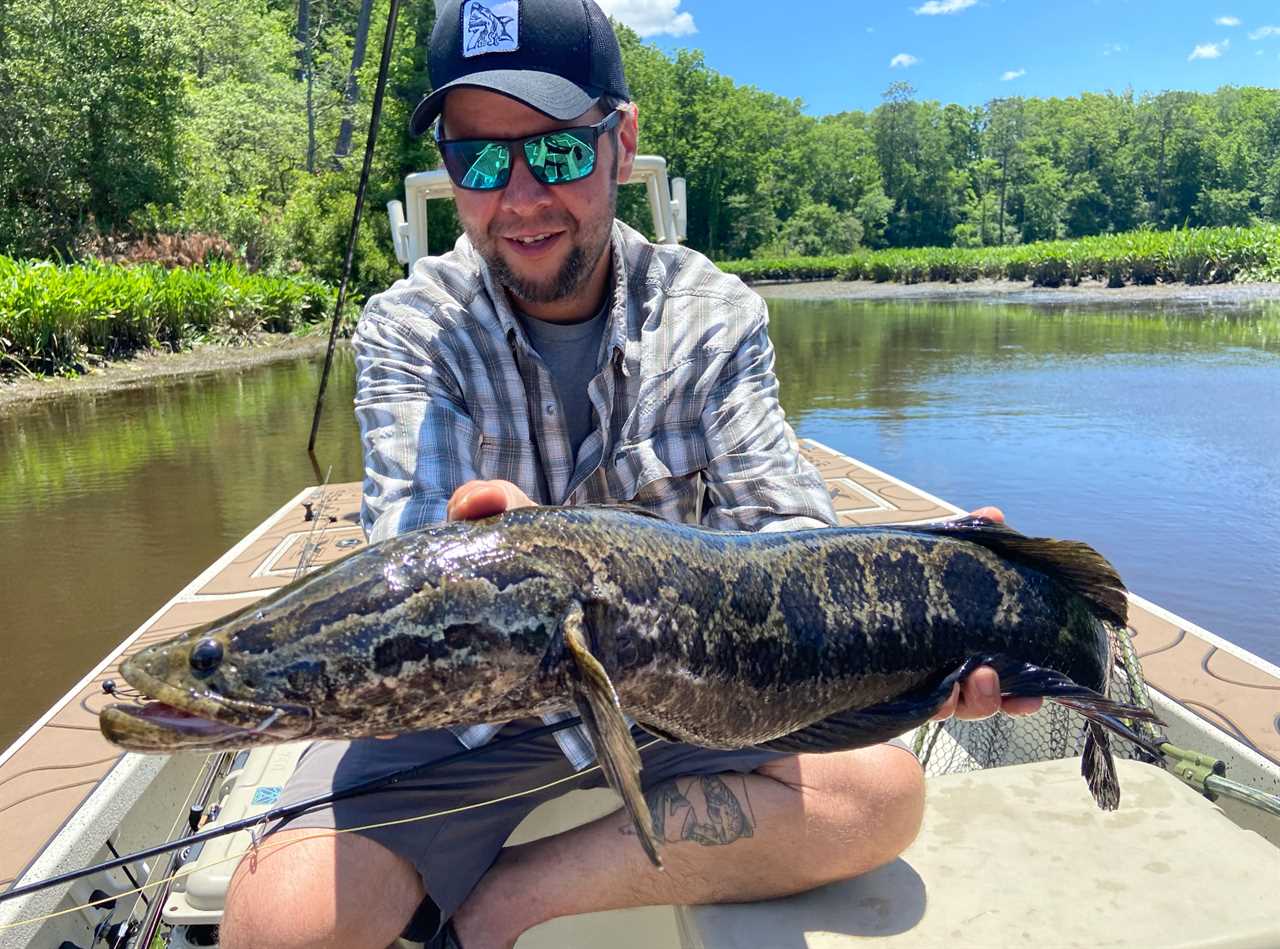
The author with a stud snakehead. Joe Cermele
Common Names: Snakefish. There are two species of snakeheads that live in the U.S. From roughly Virginia to New York, you have the northern snakehead. In South Florida, you’ll find the bullseye snakehead. Both are highly invasive, and both arguably draw more ire from anglers than any other species of fish. Then there are the guys like me who can’t get enough of them, but hear me out.
Both species of snakeheads have existed in this country for over 20 years now. When they first arrived on the scene, anglers and biologists feared they would wipe out every species of fish cohabitating with them. They didn’t. Now, that’s not to say they haven’t negatively impacted some of their environments, but the bottom line is after two decades it’s safe to say we are not getting rid of them. No matter how many we shoot with arrows or shock or net or dispatch on the bank, they are here to stay.
That said, I have an if-you-can’t-beat-them-join-them attitude. Love or hate them, it’s hard to deny that seeing a snakehead lock in on a topwater frog, wake behind it, and smash it is an exhilarating experience. If you live where they live, you should try it. And, if you’re successful, you should make snakehead tacos, because it’s one of the best freshwater fish I’ve ever eaten. Here’s an in-depth look at how to catch snakeheads.
4. Alligator Gar
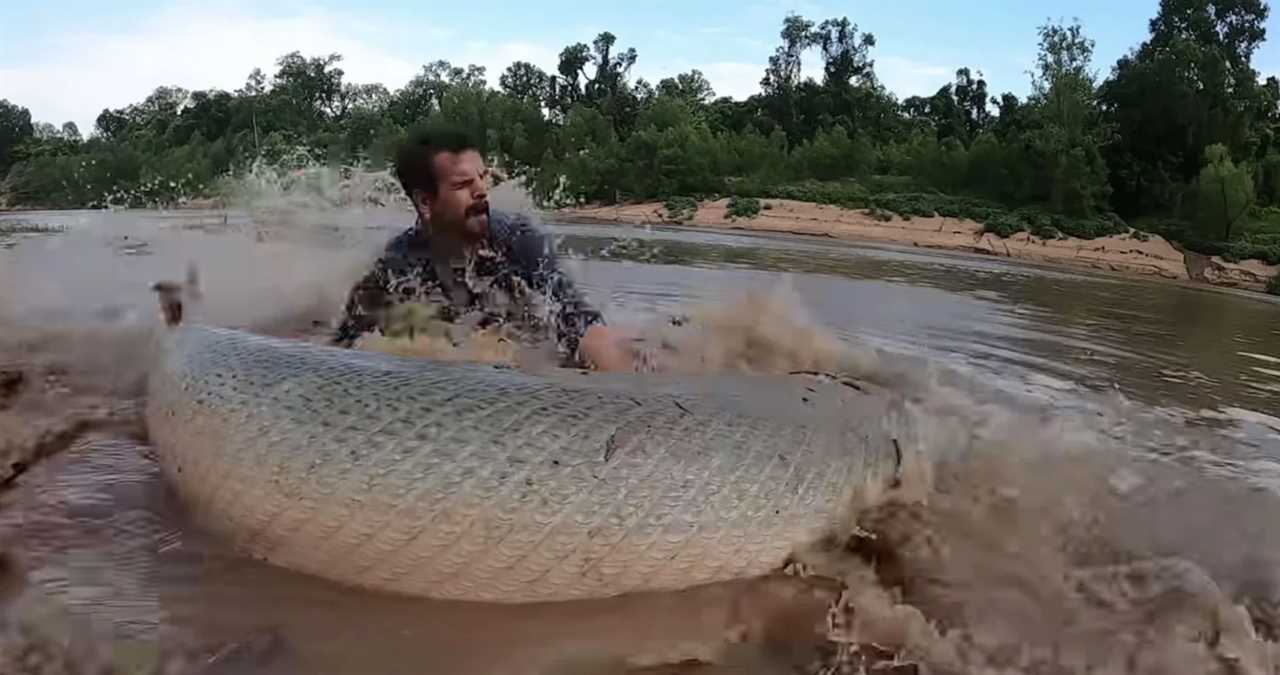
This Texas angler landed what could have been a world-record gator gar. Outdoor Life
Common Names: Gator gar. Alligator gar, in my opinion, are a fish every American angler should target at least once before he or she heads off to the big pond in the sky. The sole fact that they can weigh in at more than 100 pounds should entice anglers to chase them. The only other freshwater fish in the country that can tip the scales similarly is sturgeon, and they have no shortage of fans. Gator gar, conversely, seem to have a niche cult following but lack the appeal to draw in traveling anglers. This is a tragedy.
READ NEXT: Watch This Texas Man Catch a 8-Foot, 300-Pound Alligator Gar That Could’ve Been the World Record
Historically, alligator gar could be found throughout the Mississippi River drainage, and had been documented as far north as Ohio. Sadly, thanks to being labeled monsters over a century ago, they’ve been eradicated from most of their original range. Despite no definitive evidence of attacks on humans, their size and mouth full of sharp teeth caused fear and hysteria, which is ultimately why these days they exist only in pockets from East Texas to North Florida.
I’ll admit that gator gar fishing isn’t sexy or particularly complicated. All you do is soak a big hunk of carp or shad and wait for your line to start moving away. When you finally set that hook, though, you’re in for a long ride that features airborne gar, brutal thrashing, and lots of tail walking. If I could, I’d get down to the Trinity River in Texas every year to battle these dinosaurs.
3. Common Carp
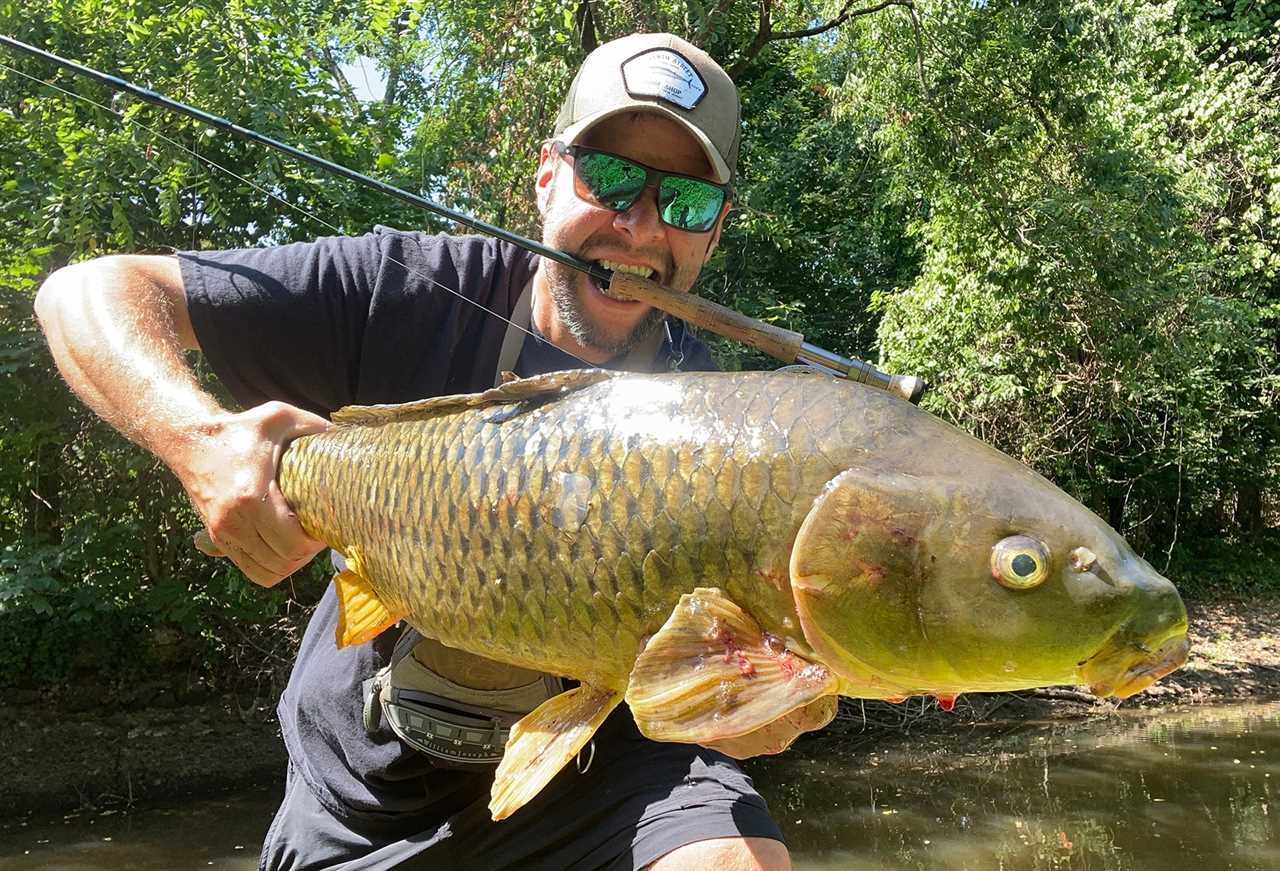
The author with a giant common carp. Joe Cermele
Common Names: Mirror carp, golden bonefish. Much like suckers, carp are available to almost every angler in the U.S. They were imported here in the Civil War era, as they could be easily raised in ponds, survive in poor conditions, and deal with the changing seasons. It’s ironic that common carp started out as a source of food, because these days nothing makes most anglers dry heave faster than thinking about cooking one up.
As with many “trash fish,” look hard enough and you’ll find plenty of people who will tell you you’re missing out on some great food. In parts of the Midwest, fried carp sandwiches are staples in bars. People of Eastern European decent love them so much they’ll purge them in clean water for days to remove the muddy taste before feasting. But, edibility aside, carp are brutal fighters regardless of what kind of gear you use to catch them.
European style carp fishing has caught on in the U.S. This is a game full of specialized gear, such as electronic bite alarms, bait-feeder reels, and premade baits and chum. Then there are carp fly addicts like me that will spend all day sight-fishing for them, hoping one makes a mistake and sucks up my wooly bugger. The point is that carp fishing can be as technical or simple as you want to make it. Even if you just pin some corn on your trout rod, you’ll catch them, and they’ll let you know how good your reel’s drag system is in a hurry. Here’s a look at the best carp baits.
2. Chain Pickerel
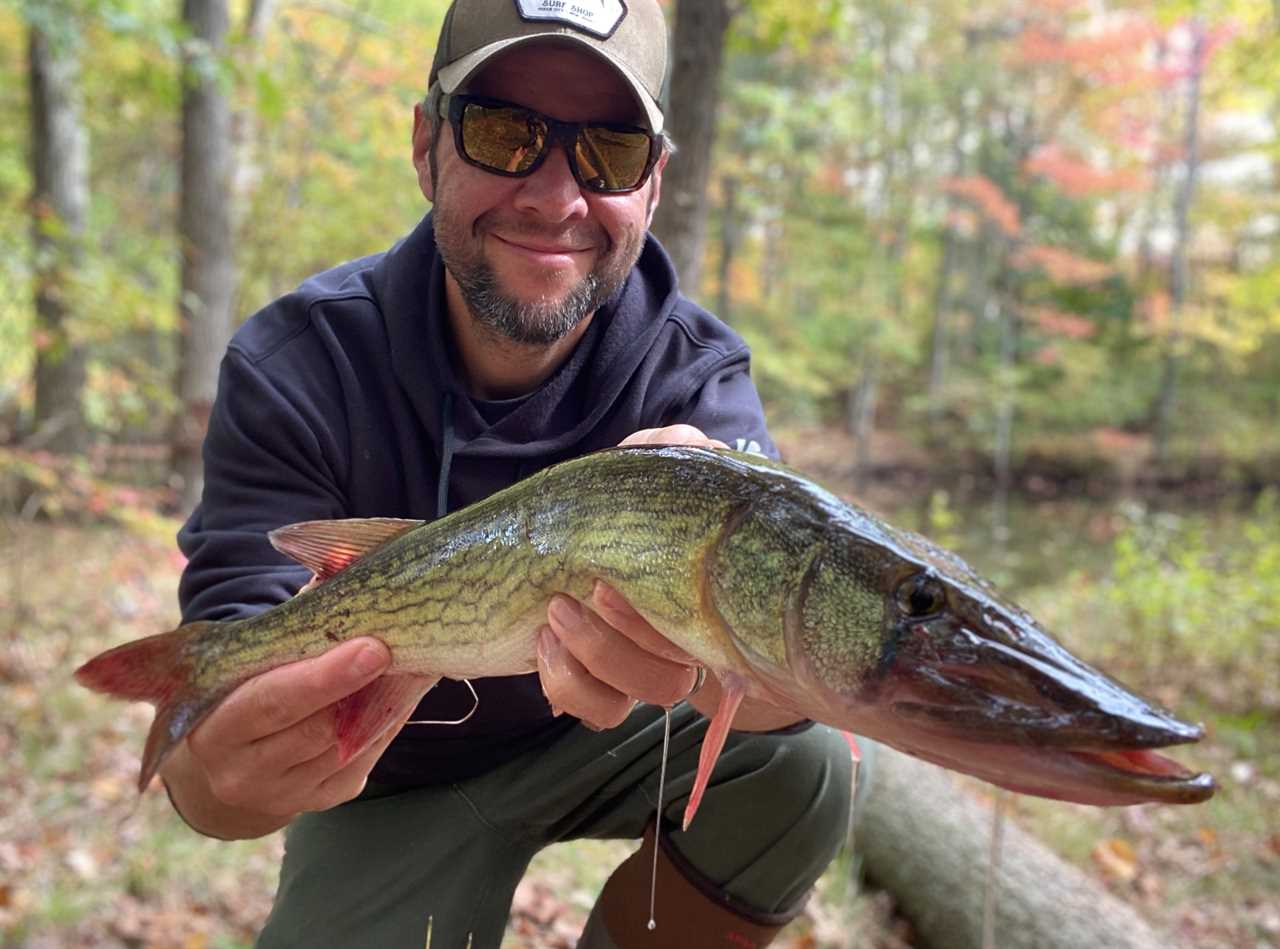
Trophy chain pickerel, like their larger cousins, require patiences and careful tactics. Joe Cermele
Common Names: Snake, jackfish, grass pike. It’s always been a funny thing to me. Anglers love muskies and northern pike, yet the lack of love for their little cousin, the chain pickerel, is palpable. Yes, size plays a role. A 30-inch chain pickerel would be a monster, but these fish exhibit the same behaviors as their bigger relatives, and they’re accessible to a lot more folks. Still, the average angler scorns them, mostly because their teeth cost them lots of soft plastics intended for bass and spinners intended for trout. But, with the proper attitude and lighter gear, I posit that pickerel are worth a lot more than cuss words.
Where I grew up, pike weren’t readily available, but there was no shortage of pickerel water. From lakes to ponds, swamps to creeks, I quickly learned that pickerel were hungry 365 days a year. The same could not be said for bass, and I started getting a rise out of dedicated pickerel missions aimed at catching the biggest specimens.
If you’re fishing a body of water loaded with little ones, I understand how they can get annoying, but trophy-class pickerel aren’t dumb. Much like pike and muskies, they often require calculation and targeted strikes. Look for areas where deep water bumps up against a shallow flat and fish it early and late with bigger lures like swimbaits and 5- to 7-inch stickbaits. You want to mimic those annoying little pickerel, because that’s what the big ones will grab when the feeding window opens.
1. Bowfin
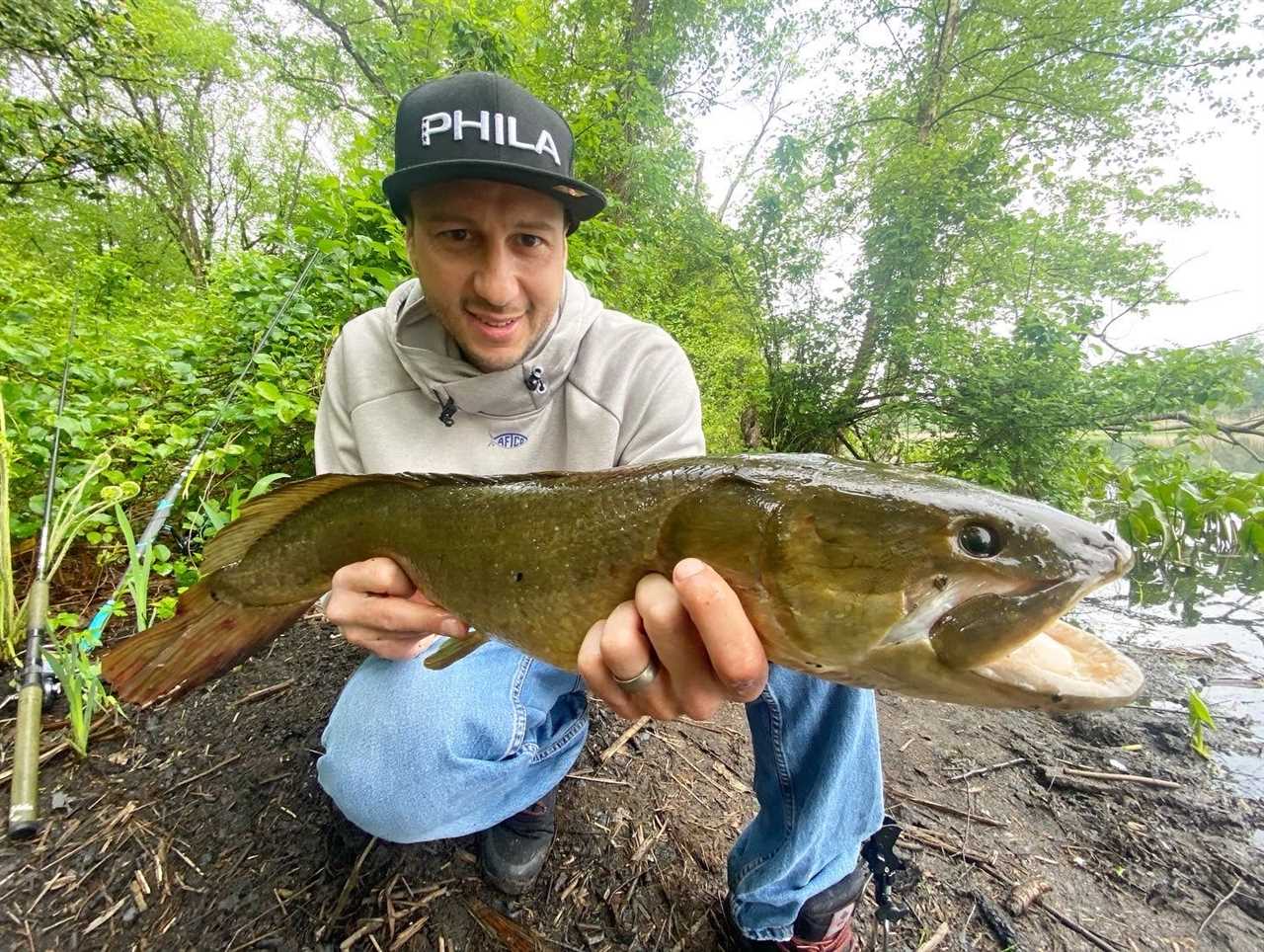
Bowfin are the ultimate underrated freshwater fish. Joe Cermele
Common Names: Grinnel, dogfish, mudfish, choupique. Bowfin might be one of the most maligned fish in the U.S., which is a real shame. They are often viewed as “gross” or “icky,” sadly causing some anglers to simply toss them on the bank to die when they land one as bycatch. The reality is, bowfin are one of the oldest native species in North America. They existed here long before humans roamed the land, and certainly long before every gamefish we love was swimming in our waters. If that kind of longevity and will to survive isn’t enough for them to earn your respect, let’s talk about their fight.
The beauty of bowfins is that you can catch them anyway you like. They feed heavily by smell, so you can lob out a piece of fresh shad or sucker or carp or shrimp and kick back in a lawn chair. Too boring? Try sight-fishing for them in the spring and early summer when they’re cruising up shallow. A white tube is my favorite offering when I’m wielding a baitcaster, and I love a white Clouser if I’m feeling saucy with the fly rod. But no matter how you target them, make sure your hook can handle it.
Bowfins have rock-hard mouths that are notoriously difficult to penetrate. They’ll bend out a buzzbait hook and take the tip off a cheap baitholder before you even make two cranks, so always make sure you’re using strong, quality hooks. You’d also be wise to beef up your outfits. When I chunk for bowfins, I use rods that could handle 40-plus-pound blue catfish. When I flyfish, I’m using a 10-weight rod. In the baitcasting department, I like a flipping stick. When a bowfin bites you need to hit it hard and muscle it in, and if your gear isn’t up to task, rods will snap as they dart, jump, and thrash from hookset to landing.
The post The 10 Most Underrated Freshwater Fish appeared first on Outdoor Life.
By: Joe Cermele
Title: The 10 Most Underrated Freshwater Fish
Sourced From: www.outdoorlife.com/fishing/underrated-freshwater-fish/
Published Date: Wed, 19 Oct 2022 15:51:29 +0000
----------------------------------------------
Did you miss our previous article...
https://manstuffnews.com/weekend-warriors/brutal-beating-in-elk-country-authorities-identify-suspects-who-allegedly-assaulted-two-hunters-in-wyoming
 Backyard GrillingWeekend WarriorsAdvice from DadBeard GroomingTV Shows for Guys4x4 Off-Road CarsMens FashionSports NewsAncient Archeology World NewsPrivacy PolicyTerms And Conditions
Backyard GrillingWeekend WarriorsAdvice from DadBeard GroomingTV Shows for Guys4x4 Off-Road CarsMens FashionSports NewsAncient Archeology World NewsPrivacy PolicyTerms And Conditions
